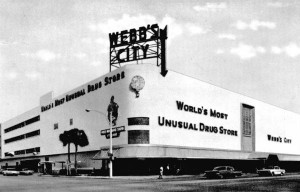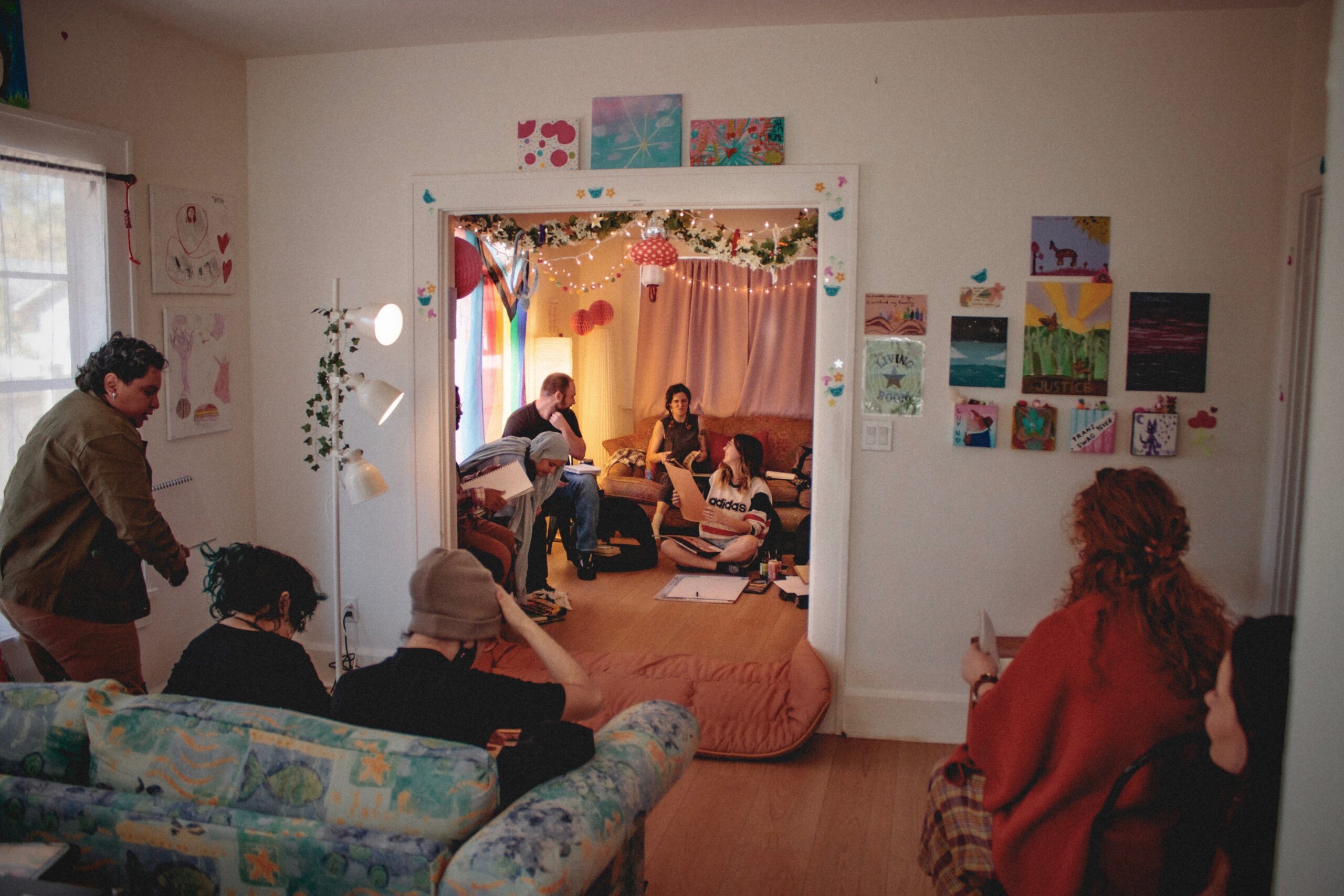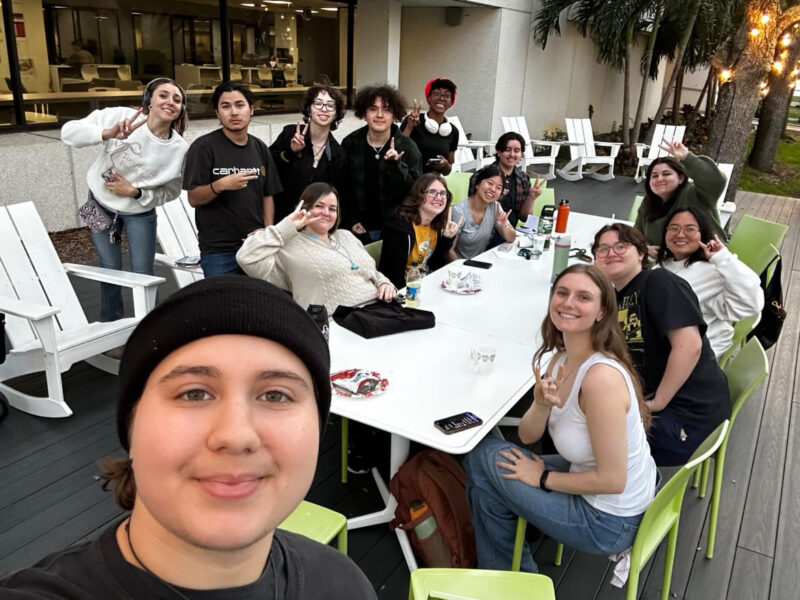
St. Petersburg, or “the ‘Burg,” is full of quirky and weird sights with a history that is just as colorful as its modern nightlife. Unfamiliar with the area? Returning students or students fresh to college#and the city#can acquaint with “the Sunshine City.”
1) I thought St. Petersburg was in Russia….
When the city was founded in 1888, its two founders flipped a coin to decide its name. Whoever won would have the small village of 300 people named after their childhood town. John C. Williams of Detroit lost, and the city was named in honor of Pyotr Dementyev’s (also known as Peter Demens) beloved city in Russia. The first permanent structure to be built, the Detroit hotel, was named after Williams’ town and still stands today as the oldest structure in the city.
Location: Historical marker located at entrance to Demens Landing, 1st Avenue SE and Bayshore Boulevard. The Detroit Hotel located at Central Avenue and 2nd Street N. Five minute walk from USF St. Petersburg.
2) Those airplanes are way too noisy….
One of the great features of the ‘Burg is Albert Whitted Airport located across the street from USFSP. You can take a scenic helicopter tour of the city, go for quick trips to the beach, or, for those students who have a pilot’s license, find a quicker commute to and from campus each day. The airport was originally joined with the Coast Guard station directly to the south, but advancements in air technology caused the airport to be too small for continued military use.
Location: Albert Whitted Municipal Airport, 1st Street S and Dali Boulevard. One minute walk from USFSP.
3) Birthplace of history
It should be fitting that there is an airport in downtown St Petersburg, because, after all, we are the birthplace of commercial aviation. A little before 10 a.m. on Jan. 1, 1914, Tony Jannus flew the first commercial airline across Tampa Bay. It was the first time that a scheduled airline flew anywhere in the world. The passengers on the 23-minute flight were former St. Petersburg mayor Abram Pheil and a sack of mail bound for Tampa. While the vehicle that made the flight, the Lark of Duluth, was destroyed during landing in San Diego a few years later, a replica hangs in the St. Petersburg Museum of History, just ashore from where the historic flight launched.
Location: St. Petersburg Museum of History. Historical markers located in Albert Whitted Park, and adjacent to the St. Petersburg Museum of History. Ten minute walk from USFSP.
4) Wiki wiki what?
As if commercial aviation isn’t vital enough to our modern lives, St. Petersburg was also the home of the tool most college students love and professors love to hate – Wikipedia. Shortly after being created by Jimmy Wales in 2001, the fledgling encyclopedia moved to offices downtown. It was here that the encyclopedia was incorporated to the non-profit Wikimedia Foundation in 2005, seeing an increase in usage and popularity. Although the foundation moved to San Francisco in 2008, the majority of the encyclopedia servers are still housed in the Tampa Bay area, making its content subject to Florida laws.
5) Williams Park hosted presidents?
Yes! Once-prominent Williams Park was the site of many presidential rallies and visits during the second half of the 20th century. Richard Nixon spoke on behalf of presidential candidate Barry Goldwater from the park in 1964, and the 1980 election saw both Ronald Reagan and Jimmy Carter both nearby and at the park. Although Tampa hosted the 2012 Republican National Convention, St. Petersburg hosted a vice presidential debate in 1996. Before its demolition in 2004, the Bayfront Center hosted the 1996 debate between Al Gore and Jack Kemp.
Location: Williams Park, the 300 block of 1st Avenue N. Bayfront Center demolished in 2004 to make way for the new Dali Museum. Five to seven minute walk from USFSP.
6) There are moon rocks in the ‘Burg.
Yes. Really. You don’t have to drive across the state to Kennedy Space Center or fly to the Moon to see real pieces of lunar cheese. Two alumni of the Admiral Farragut Academy, Alan Shepard and Charlie Duke, were moonwalkers. Duke, who landed on the moon with the Apollo 16 Mission in 1972, was awarded an Ambassador of Exploration award by NASA in 2006. Since the award contains a lunar sample encased in Lucite, and because moon rocks cannot be privately owned, the award was required to be displayed to the public. Duke chose his alma mater in St. Petersburg to house his award, which is on display in the school’s main entrance.
Location: Admiral Farragut Academy, 501 Park Street N. Twenty minute drive from USFSP.
7) A memorial that benefits others.
The city is also home to another tribute to manned space exploration, albeit a darker one. Edward White was the first American to walk in space on the Gemini IV mission in 1964, and was slated to be on the inaugural flight of the Apollo spaceship in 1967. However, a routine test of the capsule on the launch pad killed White and his two fellow crewmembers on Jan. 27, 1967, when a wire shorted out and sparked. The capsule, pressurized with flammable pure oxygen, ignited and killed all three men in a matter of seconds. When White’s family moved to St. Petersburg in the mid-1970s, following his father’s retirement from the military, the city honored his son’s legacy by naming a new hospital after him, Edward White Hospital. One of White’s Apollo 1 training suits is inside the main lobby, as well as displays of the Gemini program. It serves as a reminder of the sacrifices made in the pursuit of exploration and the expansion of knowledge.
Location: Edward H. White II Memorial Hospital, 2323 9th Ave. N
8) Delivering mail by bicycle, since 1917.
Mail delivered in the city itself didn’t require Jannus’ pilot expertise or airplane, but a much simpler solution – the bicycle. When the Open Air Post Office was opened in 1917, its mail carriers delivered letters on bicycles to addresses within a reasonably short distance from downtown. Today, St. Petersburg is one of only a handful of cities in the entire U.S. to continue this tradition, and there are little signs that it will go away anytime soon.
Location: The historic Open Air Post Office is located on the corner of 4th Street and 1st Avenue N. Ten minute walk from USFSP.
9) So was the ’Burg really that much different a hundred years ago?
Oh yes! In fact, the city has changed considerably in the last 30 years. To get a better understanding of how much land the city had to expand on, an aerial map of southern Pinellas county was made in 1926. The gigantic map is essentially a bird’s-eye view of how the city looks from a few thousand feet in the air. Familiar features that stand out include the partially-completed 1926 million-dollar Pier, dredging of Snell Isle, and the recent completion of the waterfront park system. The grid system of roads, which many of us either love or hate, extends into the swampland as dirt paths. U.S. 19, or 34th Street, one of the county’s biggest thoroughfares, was not created until 1929, and appears as little more than a dirt road dead-ending into the Gulf of Mexico. The map has survived to this day, and is on public display in the entrance of City Hall. It’s an incredible tool to see just how far the city grew in the last 90 years, and how things have, and have not changed.
Location: St. Petersburg City Hall, 175 5th St. N. Ten minute walk from USFSP.
10) An express lane to dancing chickens and mermaids?
Webb’s City, once the largest drugstore in the world, employed tactics during its over 50-year lifespan to draw in locals and visitors alike. Like its equally famous sibling at Weeki Wachee, the store put on a mermaid show using both live actresses and dummy figures. Additionally, mannequins on sidewalk displays were voiced by actresses behind a double mirror, startling adults and youngsters alike; there was even a two-cent dancing ‘chicken’ that would entertain those who paid it. However, declining tourism and neighborhoods forced the “World’s Most Unusual Drugstore” to close in 1979. One legacy of the famous store that is almost universal today was Doc Webb’s ingenious method to increase the speed at which people purchased items#the 10 item or less lane.
Location: A multi-block area spanning from 1st Avenue S and 9th Street, to 3rd Avenue S and 6th Street. The main structure was located on the corner of 1st Avenue S and 9th Street. Twenty minute walk from USFSP.
11) Where’d all the benches go?
If you enjoy a good craft beer, Green Bench is a great place to go, but the brewer’s name is more than just unique – it pays homage to one of St. Petersburg’s most iconic trademarks, the green benches. Every major city street downtown was lined with thousands of green benches for locals and visitors alike to enjoy “The Sunshine City.” They were one of the most visible and well-known trademarks of St. Petersburg for most of the 20th century, having started around 1915. At their peak, over 5,000 benches seating up to 25,000 people lined the streets of the ‘Burg. Never heard or seen of one? It’s because an effort to modernize the city in the 1980’s caused all the benches to be removed from city sidewalks. The overwhelming majority ended up dumped in Tampa Bay, but a few survive at the St. Petersburg Museum of History and parks around the county. The next time you’re walking around Jannus Landing or down Central Avenue, envision all the rows of green benches with people basking in the tropical climate.
Location: Every major sidewalk in the downtown core.
12) Fun in the Sun!
Keeping with the spirit of St. Petersburg’s nickname, “The Sunshine City,” the city council and tourism board created an iconic logo for the city to be used on posters, brochures and other memorabilia touting the city’s near-constant sunshine. Known as Mr. Sun, the anthropomorphic orb with glasses has welcomed visitors since the early 1950s. He was replaced by the current Pelican gradient logo in the mid-1980s. His legacy lives on with occasional appearances around the city, including the Chamber of Commerce and a massive mural behind the Blue Lucy art gallery.
Location: Chamber of Commerce, corner of 1st Street and 2nd Avenue. Blue Lucy located at 653 Central Ave., with mural accessible from 1st Avenue N. Ten minute walks from USFSP.


